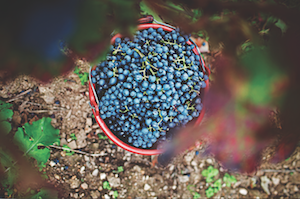..............................................
THERE IS A RENEWED ENERGY AMONG GERMANY'S WINEMAKING FRATERNITY WHICH, coupled with an ongoing evolution both stylistically and with the labelling of the wines, was palpable at the funky G Major UK trade tasting in London this April.
Modern and in the swing of things, with a saxophonist and a sensory wine and art class to jolly things along, the crisp presentation sent a clear message that Germany means business when it comes to upping the ante regarding the image and communication of its wines.
And there’s much to shout about, with so much going on. Most knowledgeable wine people readily agree that Germany delivers not just great quality, but some fantastic value for money, with the flagship variety, Riesling, being one of those highly regarded by commentators, sommeliers and merchants alike.
Moreover, there has been an ongoing collective trend to produce dry styles of Riesling, which has undoubtedly helped those selling and recommending these wines to drinkers, who in turn are increasingly oblivious – due to upcoming younger generations – of any past negative associations with cheap and sweet offerings.
This change is marked, even in the most traditional of previously off-dry and sweet-leaning regions such as the Mosel.
“Younger producers are following the lead of pioneering winemakers such as Ernst Loosen before them, seeking out quality, going back to the steep and hard-to-work slopes, and the perception of the Mosel as a traditional region producing sweeter styles of wine is also changing with drier styles increasingly to the fore,” says Leweke von Marschall of Mosel-based Richard Bockling.
The challenge now facing Germany is two-fold: it needs to continue to drive global understanding of its outstanding portfolio of typically drier Rieslings, while relaying the message that the country’s winemakers make much, much more besides.
“We need to get away from the brain thing, and get into the tasting thing,” is how Christian Nett of Weingut Bergdolt-Reif & Nett describes the challenge. “It is really important to get younger people into German wines, and the diversity of the wines, which is understood in Germany, but not beyond our borders.”
Nett, who cultivates diverse varieties in the warmish Palatinate, suggests that global understanding of the evolution in Germany lags a decade behind the reality of the wine scene today, but is confident the world is catching up. It’s an assertion born out in several northern European countries, where proximity to Germany – plus factors such as Berlin being a regional cultural beacon, looked to as a trend-setting city by a younger generation – has seen imports of German wines growing.
“In Germany now 95% of Riesling in the on-trade is dry and globally the drier styles are definitely having an impact, with a buzz around our wines in Holland, Denmark, Sweden and Norway, and countries such as the Czech Republic and even Italy,” says winemaker Ernst Loosen. “The taste for dry Riesling is also growing fast in the US and we are selling like crazy in China, but also with off-dry styles.”




